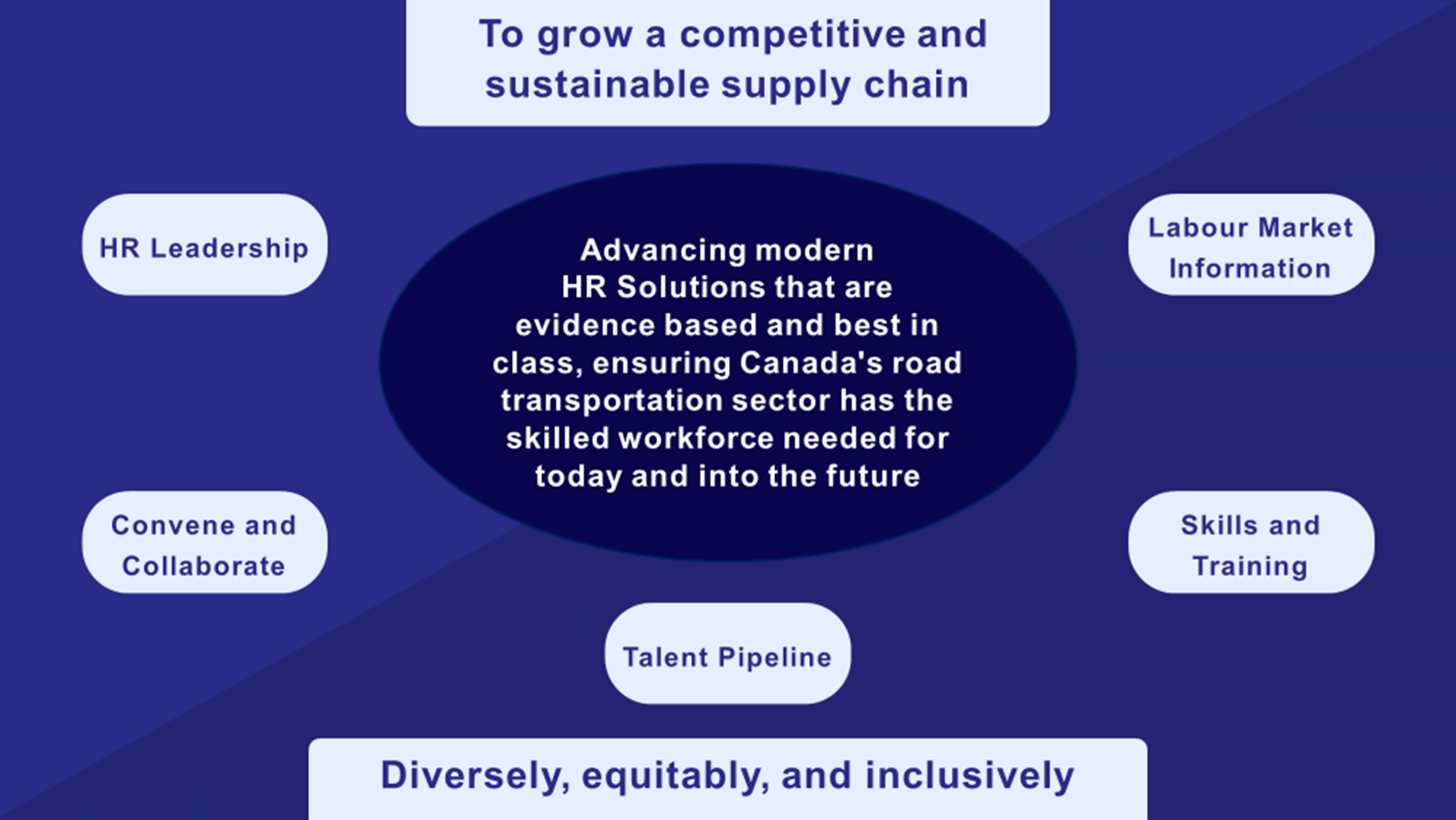Bien que la pénurie de conducteurs soit depuis longtemps une préoccupation majeure des employeurs du secteur du camionnage et de la logistique, les récentes informations sur le marché du travail de RH Camionnage Canada montrent que l’augmentation des coûts d’exploitation est en tête de liste depuis environ un an. Et la situation n’est pas près de s’améliorer.
Les employeurs font face à de nombreux défis — prix des carburants, coûts de la main-d’œuvre, pressions réglementaires, etc. Les RH ne font pas exception à la règle : attirer et maintenir en poste les meilleurs talents reste une préoccupation majeure.
Jetons un coup d’œil à certaines stratégies utilisées par les Meilleurs transporteurs employeurs pour rester en tête sans se ruiner.
Optimiser le recrutement pour gagner du temps et de l’argent
Un processus d’embauche plus efficace signifie moins d’argent dépensé en annonces, entretiens et intégration. La réduction du délai d’embauche vous permet de pourvoir les postes plus rapidement et à moindre coût.
Il existe toute une série de nouvelles technologies qui peuvent être mises à profit, notamment :
- Des plateformes alimentées par l’IA qui peuvent automatiser la sélection et le classement des candidats
- L’analyse prédictive pour aider à prévoir les besoins en matière d’embauche
- Des tests de présélection pour accélérer l’évaluation des candidats et automatiser le suivi
- Des plateformes de recrutement adapté aux appareils mobiles pour des candidatures rapides
- Des outils automatisés de planification des entretiens
Ces outils peuvent contribuer à réduire le temps et les coûts consacrés à des processus manuels dépassés et à améliorer la qualité de vos recrutements. Prenez le temps d’évaluer ce qui est disponible et ce qui peut vous convenir, afin de gagner du temps et de l’argent.
Les avantages non monétaires attirent et conservent les talents
Il n’est peut-être pas possible d’augmenter les salaires lorsque les autres coûts augmentent, mais offrir des avantages sociaux flexibles et des options favorisant l’équilibre entre la vie personnelle et professionnelle est un autre moyen de rendre les employés heureux.
Les horaires flexibles, les semaines de travail comprimées, les programmes de bien-être et autres sont quelques-unes des initiatives auxquelles nos Meilleurs transporteurs employeurs ont recours pour rester compétitifs sur le marché.
Deux points principaux distinguent les Meilleurs transporteurs employeurs de la concurrence :
- Ils demandent à leurs employés quels sont les avantages non pécuniaires qui leur seraient utiles.
- Ils prennent le temps de communiquer clairement ces offres.
Accorder la priorité à la reconnaissance et à l’engagement des employés
Les Meilleurs transporteurs employeurs comprennent qu’il est plus rentable de satisfaire les employés actuels que d’en recruter constamment de nouveaux. Les programmes d’engagement des employés et les initiatives de reconnaissance peuvent améliorer le moral, réduire le taux de rotation et stimuler la productivité.
En voici quelques exemples :
- Programmes structurés de reconnaissance des employés pour les réalisations ou le rendement en matière de sécurité
- Collecte régulière des commentaires des employés, qui sont pris en compte pour améliorer la satisfaction
- Permettre aux employés de proposer des initiatives, telles que des campagnes de bienfaisance, des ateliers de partage de compétences, etc.
- Programmes « employé du mois »
- Reconnaissance devant l’équipe pour un travail bien fait
- Cartes-cadeaux en remerciement
N’oubliez pas : la cohérence et la sincérité sont essentielles.
Investir dans l’avancement professionnel pour favoriser la loyauté
Les employés qui ont l’impression d’avoir des possibilités d’évoluer et de progresser sont plus susceptibles de rester avec votre organisation. Offrir des programmes d’avancement professionnel et de perfectionnement peut contribuer à réduire les coûts liés au roulement du personnel et à constituer une main-d’œuvre plus qualifiée.
Et vous n’avez pas besoin de vous ruiner pour y parvenir.
Voici quelques exemples :
- Proposez des formations qui correspondent aux objectifs des employés et aux besoins de l’entreprise.
- Développez des plans de carrière clairs pour les conducteurs et le personnel de bureau.
- Envisagez le remboursement des frais de scolarité pour les conducteurs et le personnel d’entrepôt afin qu’ils obtiennent des qualifications spécialisées — réduisant ainsi la nécessité de recruter à l’extérieur pour des postes émergents ou plus avancés.
- Développez des possibilités d’apprentissage entre pairs — telles que des programmes de mentorat ou d’observation au poste de travail — qui sont peu coûteuses, mais de grande valeur.
Accéder à la bibliothèque de ressources RH de RH Camionnage Canada
Nous sommes là pour vous aider ! Notre bibliothèque de ressources RH offre une collection complète de guides, d’outils et de modèles pratiques et à jour, et plus encore, afin de soutenir la conformité au Code canadien du travail, l’élaboration d’une politique moderne et plus encore. Tous ces documents sont téléchargeables gratuitement sur notre site Web.
Vous pouvez consulter notre bibliothèque de ressources RH pour en savoir plus.
Trouver des mesures plus intelligentes et plus rentables est toujours souhaitable, et rester agile peut vous aider à faire face à l’augmentation des coûts tout en continuant à développer votre équipe de manière efficace.
Angela Splinter est la directrice générale de RH Camionnage Canada, un organisme national à but non lucratif et une source fiable d’informations sur le marché du travail et de solutions de pointe en matière de ressources humaines pour la main-d’œuvre des secteurs du camionnage et de la logistique. Nous avons établi des partenariats et collaborons avec un réseau dynamique national-provincial-territorial qui comprend des associations d’industrie, des gouvernements et des professionnels de l’industrie, afin que le réseau canadien de transport des marchandises dispose d’une main-d’œuvre ayant les compétences nécessaires au monde d’aujourd’hui et de demain.
